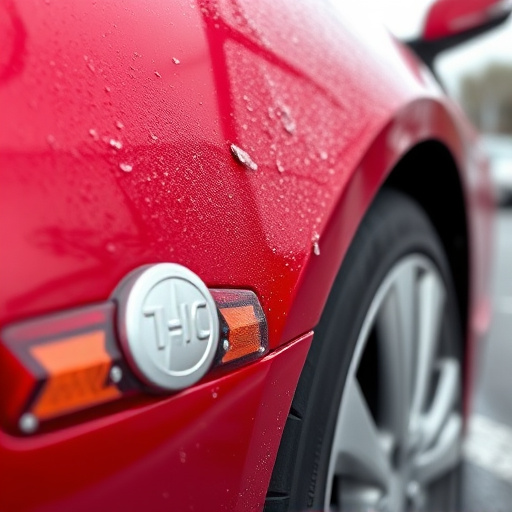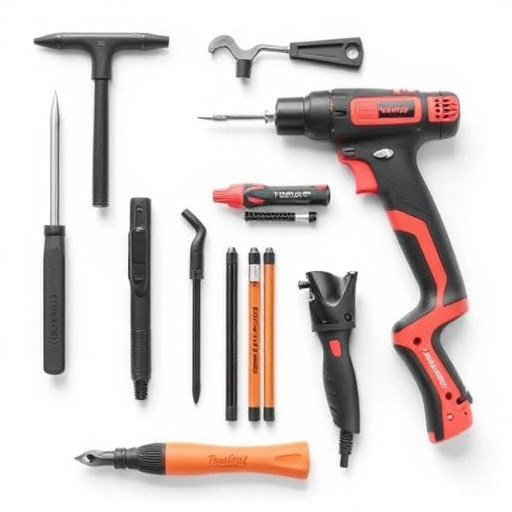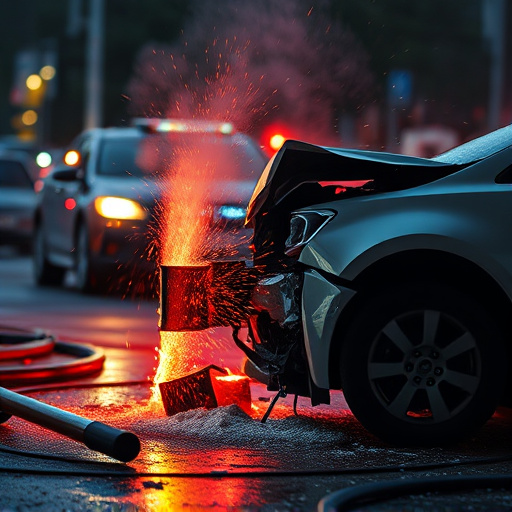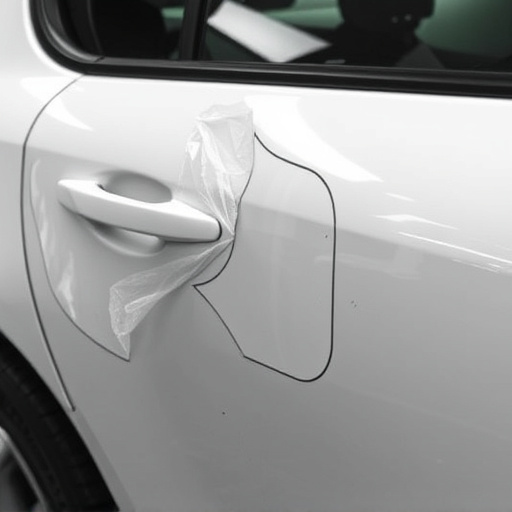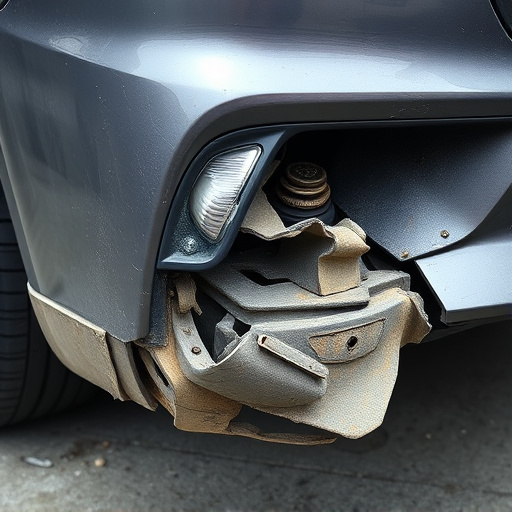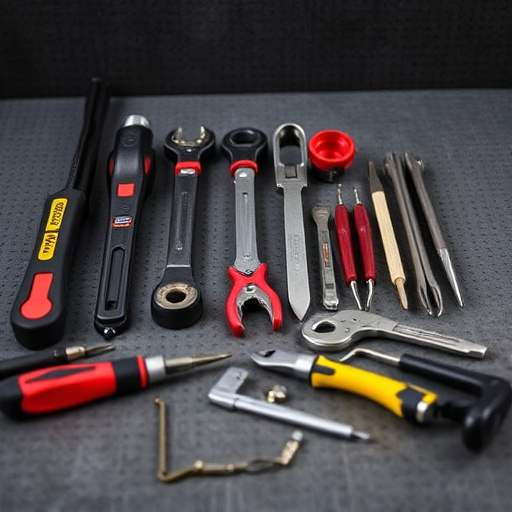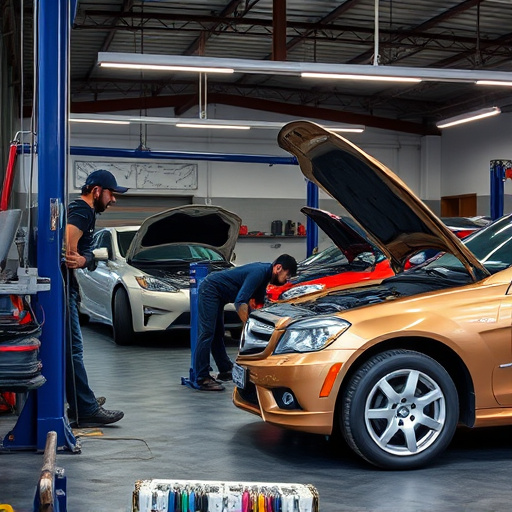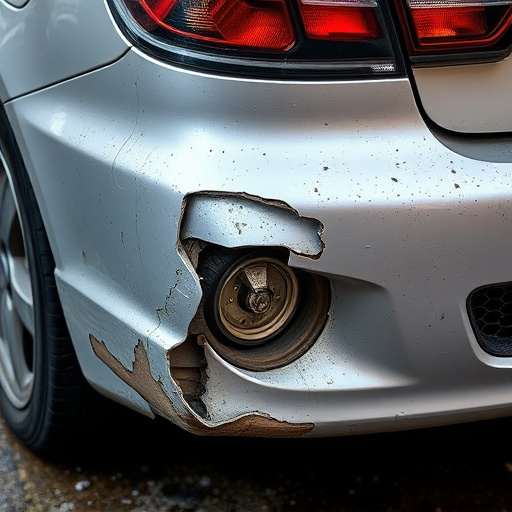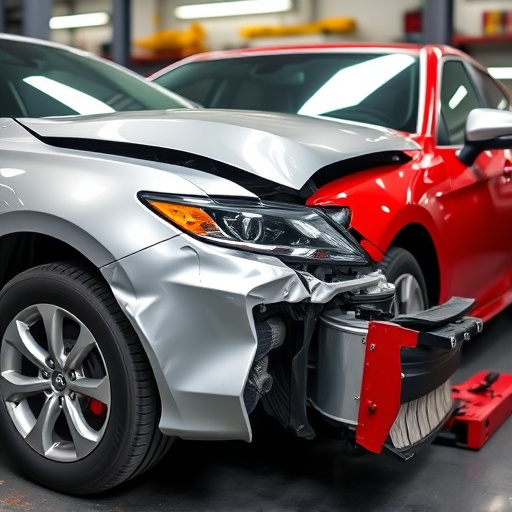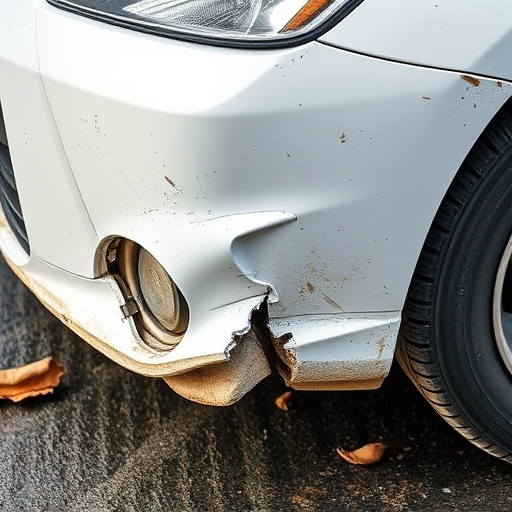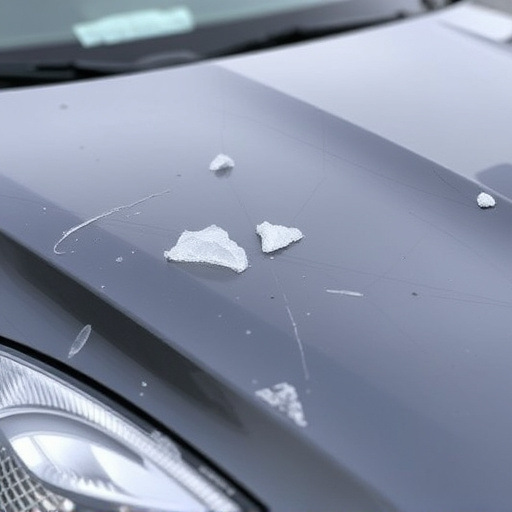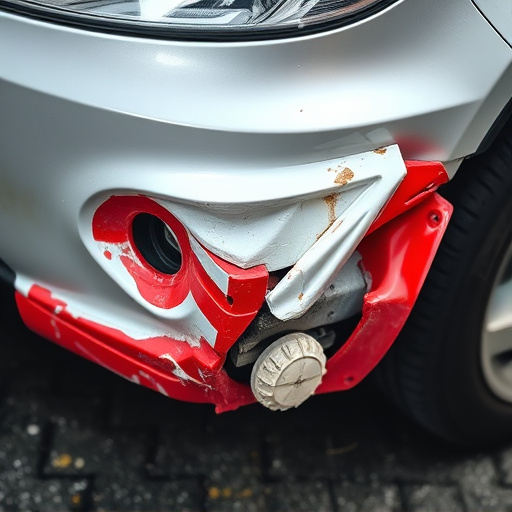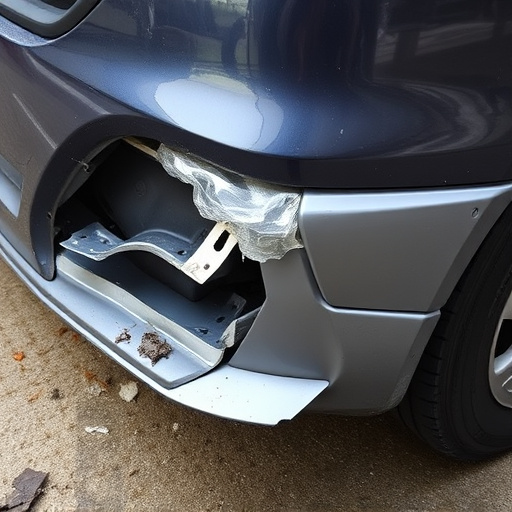Mercedes GLS crash repair goes beyond visible fixes, focusing on recalibrating ultrasonic sensors integral to advanced driver-assistance systems (ADAS) for safety and accuracy. Skilled technicians assess sensor damage, replacing or recalibrating as needed, ensuring optimal performance and enhanced driving safety for all occupants.
Mercedes GLS crash repair isn’t just about fixing visible damages; it’s a critical process that includes recalibrating ultrasonic sensors for optimal safety performance. These sensors play a vital role in advanced driver-assistance systems (ADAS), ensuring the vehicle can accurately gauge distances and detect obstacles. After a collision, proper sensor calibration is essential for the car to function at peak efficiency and maintain its safety features. This article guides you through the steps involved in Mercedes GLS crash repair and recalibrating ultrasonic sensors, ensuring your vehicle returns to its highest safety standards.
- Mercedes GLS Crash Repair: Essential Steps for Sensor Calibration
- Recalibrating Ultrasonic Sensors After Collision: A Comprehensive Guide
- Restoring Functionality: GLS Crash Repair and Sensor Alignment Techniques
Mercedes GLS Crash Repair: Essential Steps for Sensor Calibration

After a Mercedes GLS has been involved in a crash, proper and meticulous crash repair is crucial to ensure safety and optimal performance. One critical aspect of this process involves recalibrating the ultrasonic sensors that are integral to advanced driver-assistance systems (ADAS). These sensors play a vital role in features like adaptive cruise control, lane keeping assist, and automatic emergency braking, ensuring the vehicle operates safely and efficiently.
During Mercedes GLS crash repair, specialized technicians follow strict protocols to assess and address sensor damage. This may involve replacing damaged or malfunctioning sensors and recalibrating them to ensure accurate readings. Beyond tire services and general vehicle collision repair, recalibration is a nuanced process that demands experience and precision. It guarantees that the vehicle’s safety systems function seamlessly, enhancing the overall driving experience for luxury vehicle repair customers.
Recalibrating Ultrasonic Sensors After Collision: A Comprehensive Guide

After a Mercedes GLS has been involved in a collision, it’s crucial to understand that more than just visible damage needs to be addressed during crash repair. Recalibration of ultrasonic sensors is an essential part of the restoration process, ensuring the safety and efficiency of advanced driver-assistance systems (ADAS). These sensors, integrated into the vehicle’s bodywork, play a vital role in functions like adaptive cruise control, lane keeping assist, and automatic emergency braking.
During a crash, these sensors can be affected by frame straightening or bumper repair procedures. Even subtle misalignments during car bodywork repairs can disrupt their precise measurements. Therefore, after completing structural repairs, including frame straightening and bumper repair, a comprehensive recalibration is necessary. This involves resetting the ultrasonic sensors to their original specifications, guaranteeing they function optimally and provide accurate data for ADAS features, thereby enhancing road safety for the Mercedes GLS’s occupants.
Restoring Functionality: GLS Crash Repair and Sensor Alignment Techniques

After a Mercedes GLS has been involved in a collision, restoring its sophisticated safety systems to optimal condition is paramount. This involves meticulous Mercedes GLS crash repair and recalibration of ultrasonic sensors. Skilled technicians employ advanced frame straightening techniques to ensure the vehicle’s structural integrity while precise alignment methods are used for the ultrasonic sensors. These sensors play a crucial role in the car’s active safety features, such as automatic emergency braking and lane-keeping assist.
The process begins with an assessment of the damage. Technicians carefully inspect the vehicle body shop to identify any misalignments or structural distortions. Once these are rectified through frame straightening, the ultrasonic sensors are recalibrated using specialized equipment. This ensures that they function accurately, providing the precise data needed for the car’s safety systems to operate effectively. The end result is a Mercedes GLS restored to its pre-accident condition, ready to protect its occupants on the road.
Mercedes GLS crash repair isn’t just about fixing visible damages; it also involves recalibrating ultrasonic sensors for optimal performance. Understanding the intricacies of sensor calibration after a collision is crucial for ensuring the safety and efficiency of your vehicle. By following comprehensive guides and employing precise alignment techniques, you can restore the functionality of your Mercedes GLS’s ultrasonic sensors, enhancing its overall capabilities on the road.
